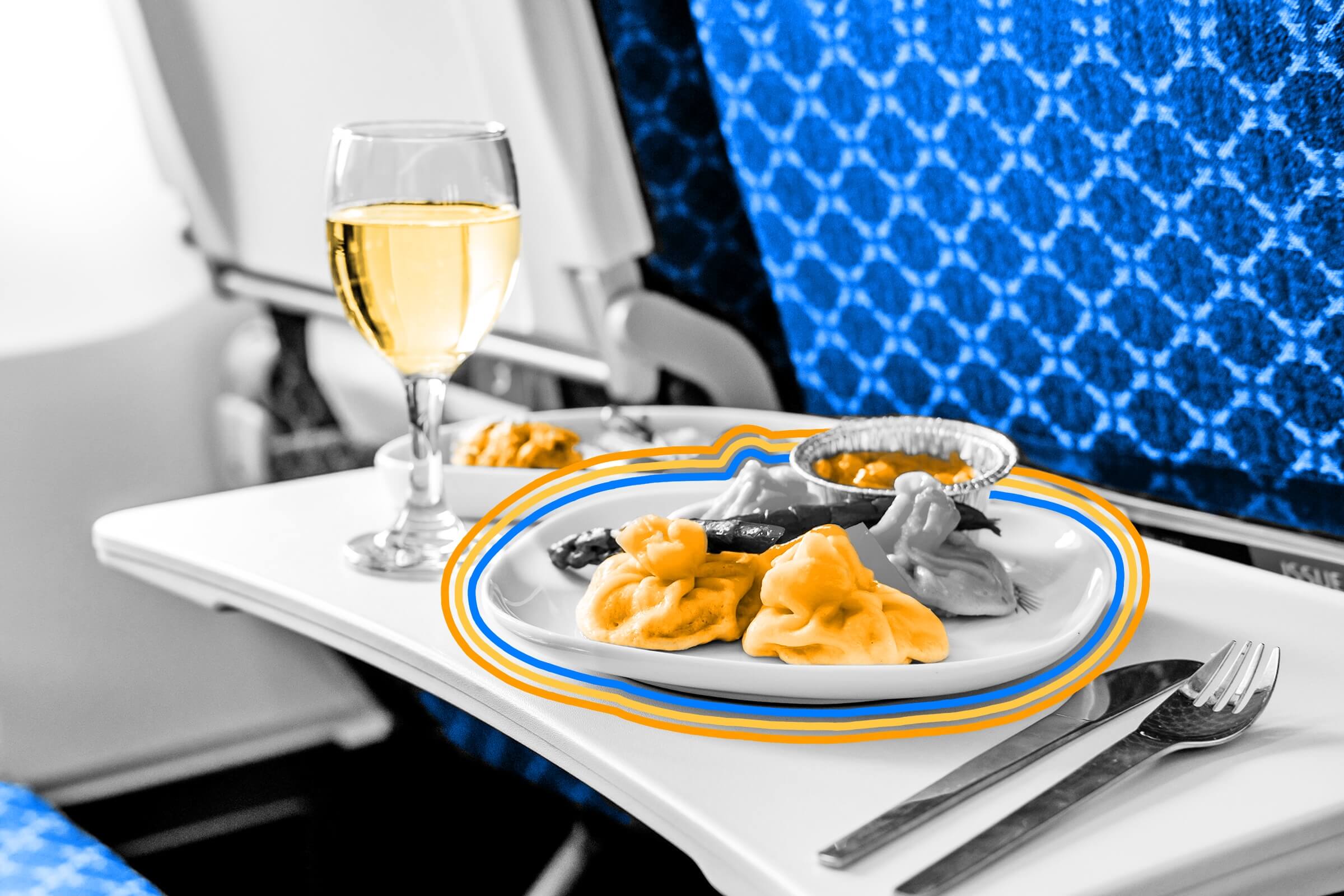
Food on planes tastes different in part because of the cabin conditions.
Back in 1919, British airline Handley Page Transport made aviation and gastronomical history by serving the first in-flight meal. It wasn’t at all fancy — just a cold sandwich and fruit handed out by “cabin boys” on a flight from London to Paris. Over the next 100 years, however, aircraft meals underwent a variety of changes; in the years after World War II, multicourse suppers were served with tablecloths and real cutlery, a stark departure from today’s precooked and reheated trays or tiny bags of pretzels. In comparison, airline meals of the past look more appealing — and probably tasted better, too. But that may have less to do with food quality, and more to do with altitude. Turns out, cabin conditions required for today’s high-altitude flights affect our taste buds, making even overly sweetened or salted foods bland.
Our sense of taste is heavily impacted by scent, and as many frequent flyers know, air travel can wreak havoc on the mucus membranes inside our noses. Cabin pressure — usually set to the equivalent of about 6,000 to 8,000 feet above sea level — decreases oxygen levels in the blood, which actually dulls the body’s olfactory receptors. The lack of humidity in the air also dries out nasal passages, making taste buds essentially numb, and reducing your perception of saltiness or sweetness by 30%. To make matters worse, studies show that the constant hum of plane engines also reduces our ability to taste sweet and salty foods, though it may actually enhance umami flavors like soy sauce and tomato juice and seasonings like curry and lemongrass. Considering flights of decades past didn’t reach such high altitudes, its likely food tasted better on board, but the trade-off is speed: When Handley Page’s 1919 flight departed, it likely maxed out at 100 mph, a sixth of today’s average flight pace.
TV dinners — a postwar marvel known for their portioned trays and quick cook time — became a mainstay in frozen food aisles during the 1950s. But the first prepackaged plates weren’t designed for at-home consumption; they were developed as easy-to-prepare fare for flights. Grocery brand Birdseye invented flash freezing in 1925, and by the 1940s, frozen meats and produce were popular with American shoppers looking for cheaper foods during wartime rationing, although entrees wouldn’t appear until after World War II. Around 1944, Maxson Food Systems, Inc. harnessed flash freezing to create prepackaged frozen dinners, which originally nourished hungry soldiers and civilians on flights. (The Navy was a major customer.) Called Strato-Plates, each dinner featured a meat, vegetable, and serving of potatoes, and was meant to be quickly warmed onboard. Unfortunately for Maxson Foods, the product never hit the retail marketplace, in part due to financial limitations. Other attempts at frozen tray meals cropped up over the next five years, but Frozen Dinners Inc., a Pittsburgh food company, popularized the TV dinners we know today. Introduced in 1950, its prepared dishes became popular along the East Coast, making way for bigger brands like Swanson to pick up on the idea and produce their own frozen fare with incredible success.

